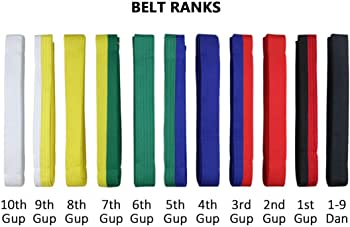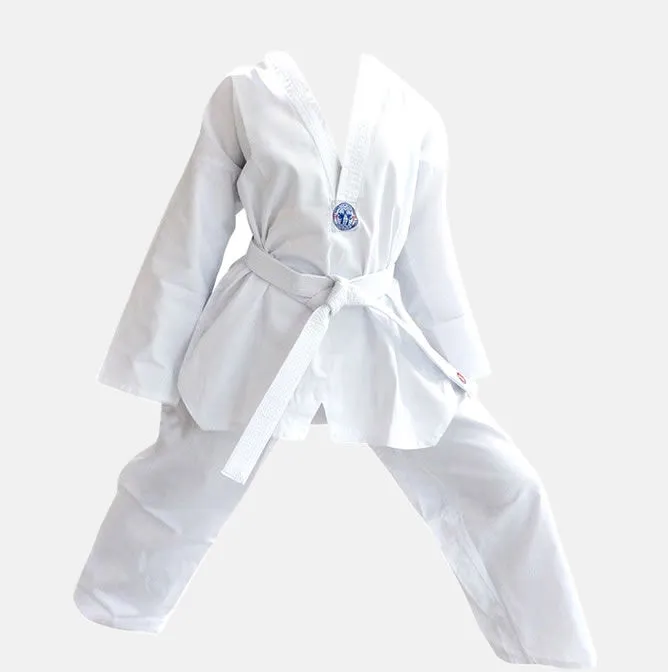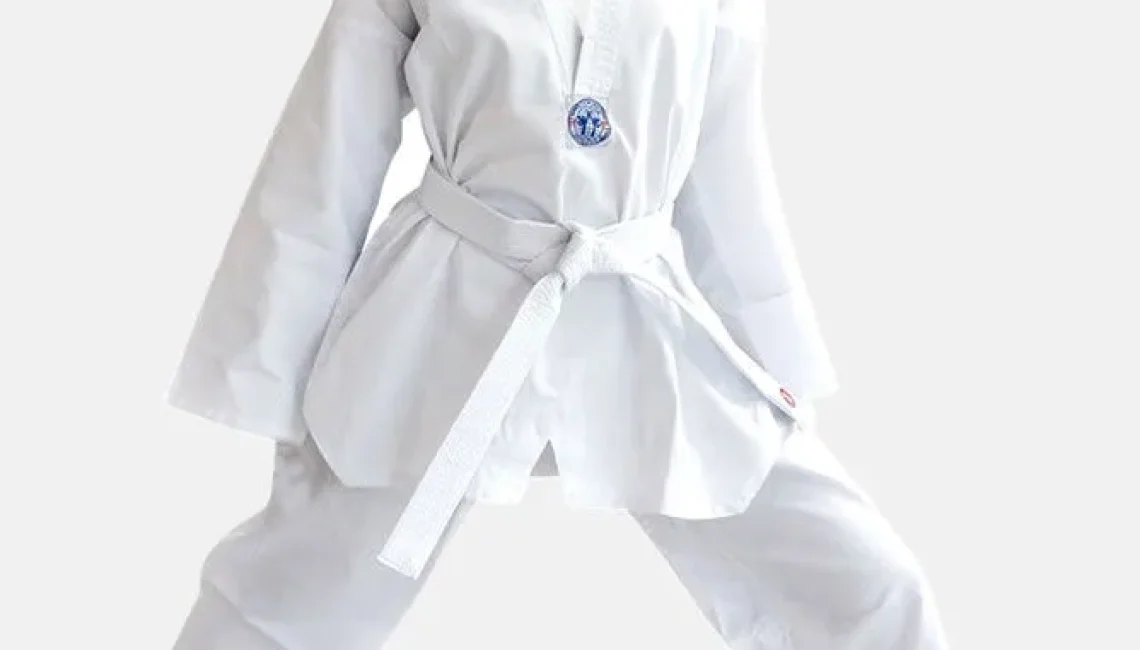Wearing it well
When you first wear a dobok, you might feel self-conscious, but that feeling quickly disappears as you realize how comfortable a real dobok is.
Coloured Belts
One of the highlights of martial arts training is exchanging your beginner’s white belt for a colored one. However, colored belts didn’t exist until 1935, and were originally only used in Judo. Jigoro Kano, the founder of judo, initially used only white and black belts to indicate a student’s progress and proficiency.

The colored belt system was popularized by Mikonosuke Kawaishi, who introduced it to his western Judo students in Paris as a way to motivate and encourage them. It is said that these western students had a reputation for enjoying fast results, unlike the more patient Asian students that Jigoro Kano was instructing.
Today, wearing a colored belt is a normal part of martial arts training and symbolizes a student’s growth and achievement.

Very soon the use of coloured belts spread from judo to other martial arts. Now, wearing a coloured belt is just a normal part of martial art training.
Although belt colours vary within the different styles of martial art (and even from school to school), the coloured belt is a symbol of a student’s growth and recognises the effort they made to earn it, so it instils a feeling of pride within students, it doesn’t matter if they are kids or adults.
The theory that the coloured belts were introduced to the western students might explain why Mikonosuke Kawaishi didn’t create more belt colours but stayed only with the white and black belts. In the western world we are into short-term goals, we want to know how long a course will take, when will we reach the end. Eastern cultures pay more attention to what happens on the journey, they see the value of the in-between time from start to completion. They don’t rush the process but see rewards at every step.
The Taekwondo Dobok
The dobok, or taekwondo uniform, typically consists of a lightweight, breathable jacket and pants made of cotton or polyester, with colored trimmings or stripes indicating the wearer’s rank or level of expertise. For martial arts practitioners, tying on a much-loved colored belt before being tested for their black belt represents years of physical effort and a transformation of their confidence and self-belief.
Your belt
One of the high points in martial art training is tying on a new belt after a successful grading test. Taking it out of the plastic cover, shaking it out and snapping it, wrapping it around your waist before tying the knot, checking the ends are the same length and being aware you’re a step closer to your goal. It’s a great feeling.


